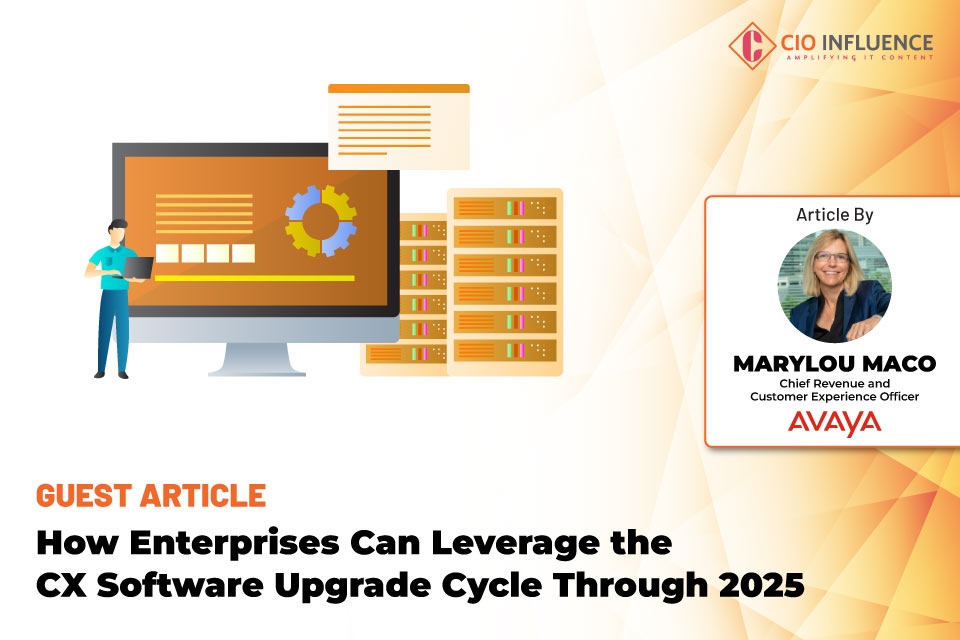The communications software landscape is undergoing a massive upgrade cycle, transforming how businesses deliver both customer and employee experiences (CX and EX). With a significant portion of CIOs planning to increase software budgets, now is the time for enterprises to take advantage of new technologies, particularly AI and cloud-based solutions. The key is to modernize without disrupting daily operations, a balance that requires careful planning and a phased approach.
Also Read: A Comprehensive Guide to DDoS Protection Strategies for Modern Enterprises
The Upgrade Cycle: A Fundamental Shift
From now through 2025, enterprises will refresh outdated communication systems, reshaping their entire approach to CX and EX. The growing investment in AI and cloud solutions marks a shift from legacy systems to modern platforms designed to improve efficiency and enhance user experience. Industry experts estimate that over 65% of CIOs are expected to allocate more budget to communication platforms, underscoring the importance of this transition.
However, the challenges of this upgrade cycle include maintaining operational continuity and balancing innovation with stability. Enterprises that can seamlessly integrate new technologies without major disruptions will emerge as leaders in the evolving landscape.
Cloud and Hybrid Solutions: Flexibility Is Key
Many enterprises are migrating to the cloud, but full-scale cloud adoption may not be feasible for every organization, especially those with complex legacy systems. Hybrid models, which combine cloud and on-premise systems, offer flexibility, allowing companies to modernize at their own pace while minimizing disruptions.
This phased approach is particularly effective for businesses that want to implement specific upgrades – like cloud-based customer support – without overhauling their entire infrastructure. Hybrid solutions allow enterprises to choose which areas to modernize first, balancing innovation and operational stability.
AI’s Role in Enhancing CX and EX
Artificial intelligence (AI) is a driving force behind the communications software upgrade cycle. What was once seen as a “nice to have” is now essential for delivering clear returns on investment (ROI). AI is playing a transformative role in both customer and employee experiences by streamlining workflows, enhancing personalization, and automating routine tasks.
In customer service, AI-powered virtual assistants and chatbots are already reducing wait times and improving response accuracy. More importantly, AI provides businesses with deeper insights into customer behaviors, enabling more tailored, seamless experiences across multiple channels.
However, AI isn’t just about automation. In the workplace, AI tools can empower employees by analyzing performance patterns, recommending improvements, and eliminating repetitive tasks. This frees employees to focus on more meaningful, strategic work, thereby improving engagement and productivity.
Also Read: Protecting APIs at the Edge
Balancing AI and Human Interaction
While AI can handle many routine tasks efficiently, human interaction remains critical, especially for complex customer issues. Customers value personalized, empathetic responses for more nuanced or high-stakes inquiries, which AI alone may not be able to provide. For enterprises, the challenge is to strike the right balance between AI-driven efficiency and human interaction.
Those who can integrate AI without sacrificing the human touch will stand out in the competitive landscape. By using AI to handle routine, high-volume tasks while deploying human agents for more complex interactions, businesses can offer a holistic, seamless customer experience that strengthens brand loyalty.
Strategies for a Successful Upgrade
Successfully navigating the CX software upgrade cycle requires more than just adopting the latest technology. Businesses must balance innovation with stability, ensuring that upgrades enhance, rather than disrupt, existing operations. Here are four key strategies to ensure a smooth transition:
- Assess Needs and Prioritize: Evaluate your existing systems and prioritize areas that offer the highest ROI. Focus on critical functions like customer service platforms, internal communications, and data management. This targeted approach maximizes the impact of upgrades without overextending resources.
- Invest in Scalable Solutions: As businesses modernize, scalability is crucial. Cloud and hybrid solutions provide the flexibility to grow with your needs, allowing for incremental improvements without major disruptions.
- Emphasize Employee Experience: Happy employees lead to happy customers. Invest in tools that empower employees, such as AI-driven analytics and collaboration platforms, to improve engagement and performance. Empowered employees deliver better service, creating a positive cycle of increased customer satisfaction.
- Partner with Experts: Navigating the complexities of an upgrade cycle can be challenging. Partnering with experienced providers who offer comprehensive solutions – such as cloud migrations, AI integration, and hybrid models – can simplify the process. These providers can tailor solutions to meet your organization’s specific needs, ensuring seamless and effective upgrades.
Embracing Change and Driving Competitive Advantage
The CX software upgrade cycle presents a significant opportunity for enterprises to transform their operations and stay ahead of the competition. By adopting scalable technologies like AI and cloud solutions, businesses can enhance both customer and employee experiences while maintaining operational continuity.
However, success requires careful planning and a strategic approach. Enterprises prioritizing innovation and stability will emerge as leaders in the next generation of communications software. By embracing the latest tools and partnering with experts, businesses can position themselves for growth and success through 2025 and beyond.


